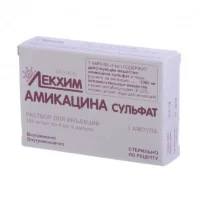Description
Efloran (Metronidazole) Infusions 500 mg/100 ml. 100 ml Vial
Ingredients
Active ingredient: Metronidazole
Mechanism of Action
Metronidazole exerts its pharmacological effects by disrupting the DNA of bacterial cells, leading to cell death. This mechanism of action results in the antimicrobial properties of Efloran infusions.
Pharmacological Properties
Efloran infusions containing metronidazole demonstrate potent antimicrobial activity against a wide range of pathogens, making it effective in the treatment of various infections.
Indications for Use
Indications: Efloran infusions are indicated for the treatment of intra-abdominal infections, skin and skin structure infections, bacterial septicemia, bone and joint infections, and lower respiratory tract infections.
Contraindications
Contraindications: Efloran infusions are contraindicated in patients with a history of hypersensitivity to metronidazole or other nitroimidazole derivatives. Special caution should be exercised in patients with a history of neurological disorders.
Side Effects
Common side effects of Efloran infusions may include nausea, vomiting, diarrhea, and metallic taste in the mouth. In rare cases, neurological side effects such as peripheral neuropathy or encephalopathy may occur.
Usage Instructions
Dosage: The usual adult dose for Efloran infusions is 500 mg administered every 8 hours by slow intravenous infusion over 1 hour. Dosage adjustments may be necessary based on the severity of the infection and individual patient factors.
Benefits Compared to Analogues
Efloran infusions offer the advantage of a well-established safety profile and proven efficacy in the treatment of a wide range of infections compared to other antimicrobial agents.
Suitable Patient Groups
Efloran infusions are suitable for use in adult patients, including the elderly population, and pediatric patients under the guidance of a healthcare provider. Dosing adjustments may be required in patients with renal or hepatic impairment.
Storage and Shelf Life
Efloran infusions should be stored at controlled room temperature away from light and moisture. The shelf life of the product is as indicated on the packaging.
Packaging Description
Efloran infusions are supplied in 100 ml vials for intravenous administration. Each vial contains 500 mg of metronidazole formulated for slow infusion over the recommended duration.
Clinical Evidence and Proven Effectiveness
Efloran (metronidazole) infusions have demonstrated consistent efficacy in clinical trials for the treatment of various infections. Studies have shown a high rate of microbial eradication and clinical improvement with the use of Efloran infusions.
Additional Information
It is essential to adhere to the prescribed treatment regimen with Efloran infusions to ensure optimal therapeutic outcomes. Patients should be advised to report any adverse reactions or concerns to their healthcare provider promptly.
Prior consultation with a healthcare provider is recommended before initiating treatment with Efloran infusions, especially in patients with a history of allergic reactions or underlying medical conditions.





